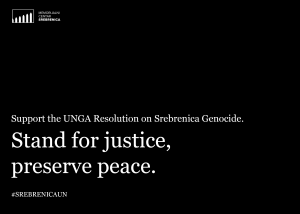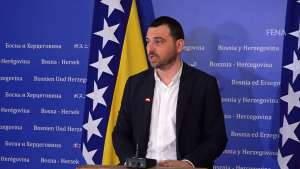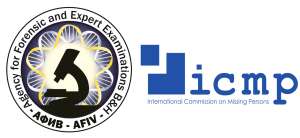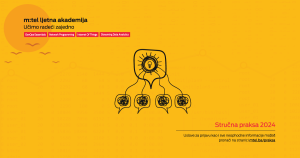THE HAGUE/SARAJEVO, December 8 (FENA) - The International Commission on Missing Persons (ICMP) is assisting the Bosnia and Herzegovina (BIH) authorities in identifying human remains exhumed from the Dobro Polje site near Kalinovik in June 2021.
Biological samples were taken from the exhumed remains and matched with reference samples provided to ICMP by relatives of the missing who last saw them alive in Srebrenica in July 1995.
On 8 December October 2021, ICMP submitted DNA match reports on ten Srebrenica victims to the BIH Missing Persons Institute (MPI).
“The Kalinovik site is the first mass grave linked to the July 1995 Srebrenica genocide to be exhumed since the exhumation at Kozluk in April 2016,” said Matthew Holliday, the Head of ICMP’s Western Balkans Program. “What is unusual about the Kalinovik site is that of all the Srebrenica genocide gravesites that have been recovered to date, it is by far the furthest distance from Srebrenica. Its location is only a few kilometers from the village of Godinjska Bara, near Trnovo, where paramilitaries of the ‘Scorpions’ unit executed six Bosniak prisoners from Srebrenica in mid-July 1995.”
On 6 May 2021, as a result of joint work by the BIH Prosecutor’s Office Special Department for War Crimes and SIPA, human remains were found in the Kalinovik area. The location, in Dobro Polje, is in inaccessible terrain covered with stones in the valley of the River Bistrica, along the M18 road.
The BIH authorities, with the assistance of forensic experts from ICMP, started the excavation on 31 May 2021. The human remains that were exhumed were highly commingled, scattered over a wide surface area, and covered with dirt and construction debris. The remains showed signs of summary execution. Ligatures were also found at the site.
On 22 June 2021, the exhumation process was completed. Based on the number of right tibia bones recovered at the site, ICMP forensic anthropologists estimated the minimum number of individuals exhumed at the location to be ten. As the bodies were so disarticulated, the court-appointed local medical-legal specialist took 64 bone and tooth samples for DNA testing.
Genetic profiles obtained from the samples have been compared to the genetic reference profiles of more than 100,000 relatives of persons missing from the conflicts of the 1990s held in ICMP’s database. Ten DNA matches were made of different individuals and these DNA match reports were submitted to the MPI for formal identification.
The authorities will determine the cause and manner of death. Additional match reports will be submitted to the Missing Persons Institute, which will facilitate the reassociation of the heavily disarticulated skeletal remains to the 10 individuals already DNA-matched, stated the ICMP.
(FENA) S. R.












